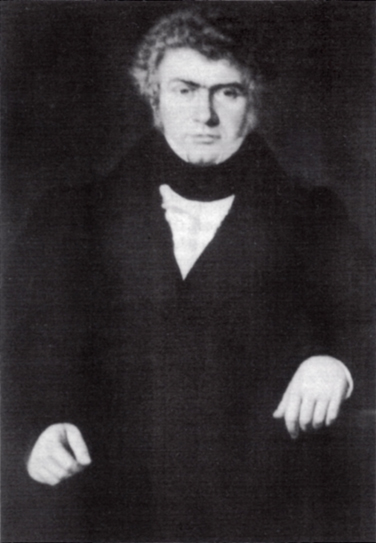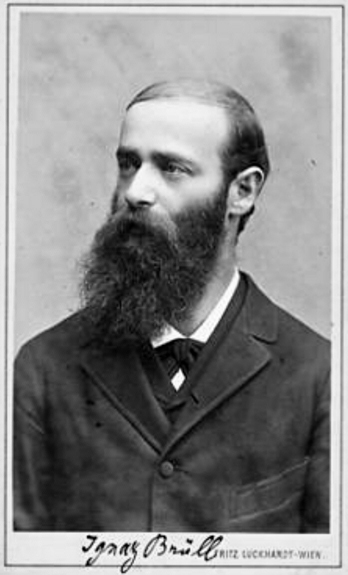Piano Music by Ferdinand Ries & Ignaz Brüll
Alexandra Oehler
Media Review / Listening Diary 2017-07-26
2017-07-26 — Original posting


The Artist: Alexandra Oehler
In an earlier posting (Listening Diary 2014-08-07) I described a CD, on which Alexandra Oehler plays works by Teresa Carreño (1853 – 1917). The German pianist Alexandra Oehler (*1970) lives and works in Leipzig — for more information on the artist’s biography see my earlier posting.
Alexandra Oehler has found herself an interesting niche: in her respectable discography of 10 CDs so far, there is one single CD with works by Johann Sebastian Bach (1685 – 1750). Apart from this single exception, she has focused on composers that rarely appear in concert programs, who may be even completely unknown to the general public:
- Joseph Martin Kraus (1756 – 1792)
- Ferdinand Ries (1784 – 1838)
- Ferdinand von Hiller (1811 – 1885)
- Ignaz Brüll (1846 – 1907)
- Teresa Carreño (1853 – 1917) — 2 CDs
- Edward Alexander MacDowell (1860 – 1908)
- Eugen d’Albert (1864 – 1932)
- Fritz von Bose (1865 – 1945)
Alexandra Oehler has recorded a full CD for each of these composers—one exception being Teresa Carreño with a second CD that has come out recently (2013). I did find her first Carreño CD interesting and could not resist adding two more recordings to my collection. More of her CDs are likely to follow—I definitely don’t regret either of the two purchases below:
Ferdinand Ries (1784 – 1838)
Ferdinand Ries: Piano Sonatas
SWR / cpo 777 136-2 (CD, stereo); ℗ / © 2006
Booklet: 28 pp. de/en/fr

The Composer
Ferdinand Ries was born in Bonn, just like Beethoven. He received piano lessons from his father, also learned to play the cello. Later, he worked in Munich, as music copyist. Early in 1803, Ferdinand Ries moved to Vienna and became pupil of Ludwig van Beethoven (1770 – 1827), later was Beethoven’s friend and secretary. Ries was quite a prolific composer, his oeuvre includes operas, a cantata, a requiem, 8 symphonies, a violin concerto, 8 piano concertos, 26 string quartets, and much more. Ries’s oeuvre isn’t entirely forgotten, but definitely not played or recorded very often. Beethoven thought highly of his pupil, even allowed him to play the solo part in his third piano concerto (with Ries’ own cadenza) in a public performance.
The Music on this CD
Alexandra Oehler carefully selected the pieces for this CD: two big sonatas, and the slow movement from each of two Sonatinas (total duration: 60’15”):
- Grande Sonate in D major, op.9/1 (29’45”):
- Allegro (9’11”)
- Tempo di Menuetto ma molto moderato (8’09”)
- Tema con variazioni (12’31”)
- Tema: Allegretto
- Variazione I … VI
- Variazione VII: Più lento — Variazione VIII: Allegretto vivace — Adagio — Tempo I
- Grande Sonate Fantaisie “L’Infortuné” in F♯ minor, op.26 (24’05”)
- Adagio con espressione – Allegro molto agitato (7’49”)
- Andante (2’44”)
- Finale: Presto (13’33”)
- Sonatina, op.5/1
- Andantino (2’17”)
- Sonatina, op.5/2
- Andantino (4’03”)
How Does it Sound?
We can definitely trust Beethoven’s judgement! Sure, the music on this CD does not come close to Beethoven’s own sonatas. Nevertheless, I really like this music! Yes, Beethoven’s is deeper, more personal, more inventive, also more experimental, more advanced. But Ferdinand Ries’ compositions are anything but worthless!!! Most of Ries’ sonatas have three movements, i.e., they follow the traditional scheme, and the first movement uses the sonata form. But in his themes, Ries is quite inventive: they are catchy, very melodic. The harmonic progression is not trivial at all, and throughout these sonatas, I could hardly find moments that I would call boring, or which would follow an entirely expected pattern. Overall, I would rate them not too far from the simpler / early ones of Beethoven’s piano sonatas, maybe close to many of Haydn’s sonatas!
The sonatas op.9/1 and op.26 appeared in print in 1810 – 1811; Ries composed them 1808, while in Paris. The Grande Sonate in D major, op.9/1 is music with classic serenity and clarity—very nice, and my favorite on this CD!
The Grande Sonate Fantaisie “L’Infortuné” in F♯ minor, op.26 is much more dramatic, even virtuosic in the first movement. The short middle movement is a calm, quiescent pole, serene, bright. Quite expectedly, the Finale returns to the dramatic attitude of the first movement, but also features lighter, serene, almost Mozartian segments. Or couldn’t it even be Haydn?
The two Sonatinas op.5/1 and op.5/2 are creations from a later time. 1813 – 1824, Ries stayed in London, he published these Sonatinas in 1823. Alexandra Oehler selected the middle movement, Andantino, from both these Sonatinas: uncomplicated, but still really pleasant & pleasing—serene in op.5/1, a set of variations on a simple theme in the case of op.5/2.
Interpretation / Performance
Alexandra Oehler plays carefully, with subtle articulation and phrasing, well-controlled dynamics. There is no extroverted virtuosity in her playing, just pure musicality. My only, minor quibble is that there are 2 – 3 places where a temporary accelerando (to me) didn’t feel quite compelling—but that’s nothing that would diminish the listening pleasure. Definitely worth a recommendation: you will not be disappointed!
Ignaz Brüll (1846 – 1907)
Ignaz Brüll: Piano Works
SWR / cpo 777 446-2 (CD, stereo); ℗ / © 2009
Booklet: 20 pp. de/en/fr

The Composer
Ignaz Brüll grew up in Proßnitz (Prostějov), Moravia. 1850, at age 4, he came to Vienna, where he spent the rest of his life. Here, he received his first piano lessons from his mother, later he was a pupil of Julius Epstein (1832 – 1926). He made his first attempts at composing at age 11. 1861, his teacher Epstein performed Brüll’s piano concerto No.1 in F major, op.10, and 1864, Brüll completed his first opera. Between 1866 and 1882, he toured Europe as concert pianist and song accompanist. Later, he was mostly known as composer of operas. After his marriage in 1882, Brüll’s home became a place where musicians / composers such as Johannes Brahms (1833 – 1897) frequently gathered. In his last years up to his death, the latter became Brüll’s close friend.
Brüll composed a large oeuvre, ranging from works for piano solo (numerous pieces, suites, one piano sonata, one sonata for two pianos) to chamber music, songs, a symphony and other orchestral works, compositions for piano and orchestra, a violin concerto, 7 operas, choral music. He retained some reputation for his operas, but his piano music is largely unknown. According to Alexandra Oehler (CD booklet), there was one single recording that was released on the occasion of the 100th anniversary of Brüll’s death. This CD is only the second recording of piano works by this composer. None of the compositions on this CD were ever recorded before.
The Music on this CD
For this CD recording, Alexandra Oehler selected Brüll’s only Piano Sonata, the Suite for Piano No.2, as well as excerpts from the Suites No.3 and 4. In addition, she included the 7 Album Leaves for the Youth (Albumblätter für die Jugend), op.33, plus one of the five Pieces for Piano (Klavierstücke), op.57. These are the tracks, as they appear on the CD (total duration: 72’48”):
- Piano Sonata in D minor, op.73 (27’24”):
- Moderato (7’55”)
- Scherzo (5’35”)
- Andante (6’41”)
- Allegro moderato (7’15”)
- Suite No.2 for Piano in D major, op.71 (17’14”):
- Präludium (5’11”)
- Scherzo (3’11”)
- Quasi Variazioni (4’11”)
- Rondo, In alter Weise / In the old manner (4’44”)
- 7 Albumblätter für die Jugend, op.33 (13’55”):
- Klage / Complaint (1’46”)
- Frühlingslied / Spring Song (1’56”)
- Armer Savoyardenknabe / Poor Savoyard Boy (2’25”)
- Im Dorfe / In the Village (1’22”)
- Menuet (2’23”)
- Menuet (1’49”)
- Glückwunsch / Felicitation (2’16”)
- Suite No.3 for Piano in A minor, op.76:
- Legende (4’43”)
- Sarabande (2’52”)
- 5 Klavierstücke / 5 Pieces for Piano, op.57:
- Romanze in A minor (3’06”)
- Suite No.4 for Piano in D minor, op.80:
- Cavatine (3’37”)
How Does it Sound?
This, now, is a different pair of shoes! Ferdinand Ries composed in the style (and close to the level) of contemporaries such as Franz Joseph Haydn (1732 – 1809) and Wolfgang Amadeus Mozart (1756 – 1791). Remember that Haydn was still alive when Ries composed the two sonatas on the CD above!
Piano Sonata in D minor, op.73
In contrast, in his piano works, Ignaz Brüll appears more conservative, more retrospective. The CD booklet and Wikipedia relate his style to that of Robert Schumann (1810 – 1856) and Felix Mendelssohn Bartholdy (1809 – 1847). I personally rather link his music to Mendelssohn than to Schumann: he doesn’t use Mendelssohn’s motorics, and his textures (e.g., in the Sonata op.73) may indeed be close to Schumann, but in the harmonies, the musical attitude, the atmosphere, he very often seems to be close to Mendelssohn. Pianistically, the Piano Sonata in D minor, op.73 from 1894 sounds like the most demanding of the pieces in this collection—probably at the level of Mendelssohn’s technically more advanced piano compositions.
Suites for Piano
The Suites differ from the sonata, in that they use (late) baroque textures and motivic pattern—but dressed in romantic / late romantic harmonies: an interesting combination! The Suites work with motifs / melodic fragments more than with extended melodies. Some parts remind me of sonatas by Domenico Scarlatti (1685 – 1757). The Piano Suite No.2 in D major, op.71 appeared in print in 1894 (together with the Suite No.1 in F major, op.58), Suite No.3 in A minor, op.76 first appeared in 1896, and the first publication of the Suite No.4 in D minor, op.80 was in 1900.
Albumblätter op.33 / Klavierstücke op.57
The 7 Albumblätter für die Jugend, op.33 from 1879 are a set of easier, short, serene, atmospheric, typically joyful pieces: lovely music. To me, these are very close to Mendelssohn’s “Songs without Words” in duration and complexity. The atmosphere in No.2, the Frühlingslied (my favorite) strongly reminds me of the Lied ohne Worte in E major, “Sweet Remembrance”, op.19/1.
Finally, the first edition of the 5 Klavierstücke, op.57 is from 1889.
For all of Brüll’s compositions, I have linked the relevant entries in the IMSLP (International Music Score Library Project) database—IMSLP includes an amazing range of scores / sheet music by Ignaz Brüll!
Interpretation / Performance
Pianistically, I find this recording even more convincing than the Ries CD: excellent, atmospheric playing without unnecessary extroverted virtuoso attitude. Alexandra Oehler listens into the music, plays with subtle rubato and agogics, and the pensive, more introverted pieces in particular seem to suit her particularly well! While as a composer, I rate Ries higher (and more original) than Brüll, the music on this CD certainly offers more atmospheric depth, and definitely more romantic mood.
Quibbles? Yes, I have two, again minor ones, but not directly concerning the interpretation:
- In the Sonata op.73, I don’t quite like the sound of the piano. Bad microphone placement? The booklet gives no information about the instrument(s) used for the recording.
- In one piece only–unfortunately my favorite track, the Albumblatt “Frühlingslied“, op.33/2, releasing the sustain pedal produces audible noise. I’m somewhat irritated when listening to this track via earphones / headphones, with loudspeakers, most people will not realize, I think. Though, once one notices, it may be hard to ignore. It’s not the first instance where I noticed this type of noise—there were also instances where I heard this in live concerts, particularly in small venues. I suspect that bad microphone placement / suspension and/or certain types of room acoustics may amplify the relevant, low frequencies.
But both these points are nitty-gritty criticism at a high level, really minor issues in the overall picture. What counts is the music and its interpretation, and there, I can’t really complain at all: it would be a pity to just let this music disappear into oblivion! Yes, it is not Brahms, nor Schumann, nor Mendelssohn, but still worth being played and listened to (from time to time)! Thanks to Alexandra Oehler for giving us valuable insight into Ignaz Brüll’s piano oeuvre!
Listening Diary Posts, Overview









